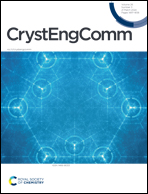Computational screening for prediction of co-crystals: method comparison and experimental validation†
Abstract
One challenge in the current drug development process is that many newly discovered drug candidates are increasingly insoluble. The use of co-crystals as a solid form technology for enhancing physicochemical properties has grown in popularity within the pharmaceutical industry. The considerable number of molecules that could potentially be used as coformers presents a challenge in the experimental screening and confirmation of each candidate on a routine basis. The use of computational techniques, which can assist in identifying suitable solvents and coformers to form novel co-crystals to improve solubility, stability, and bioavailability of the active pharmaceutical ingredients (API), may offer a viable solution to this issue. In this work, we have applied the COSMO-RS (COnductor-like Screening MOdel for Realistic Solvents) method to computationally identify appropriate solvents and viable coformer candidates for caffeine – a case study in coformer screening. Three distinct COSMO-RS implementations have been employed in solvent and co-crystal screening, and the accuracy of each implementation was scrutinized. In parallel, a quantitative structure–activity relationship (QSAR) model has been developed using machine learning (ML) algorithms to screen caffeine coformers based on their molecular descriptors. Random forest (RF), support vector machine (SVM), and deep neural network (DNN) ML models were considered. Through this work, we have compared various COSMO-RS and ML approaches, finding that the COSMO-RS was more predictive of co-crystal formation than the ML models pursued in this study. The predictions from this screening have led to successful synthesis of two previously unreported caffeine co-crystals with each of pyrogallol and phosphoric acid. We anticipate that the findings in this work will be useful for reducing cost and search space in discovery of new co-crystal materials.



 Please wait while we load your content...
Please wait while we load your content...